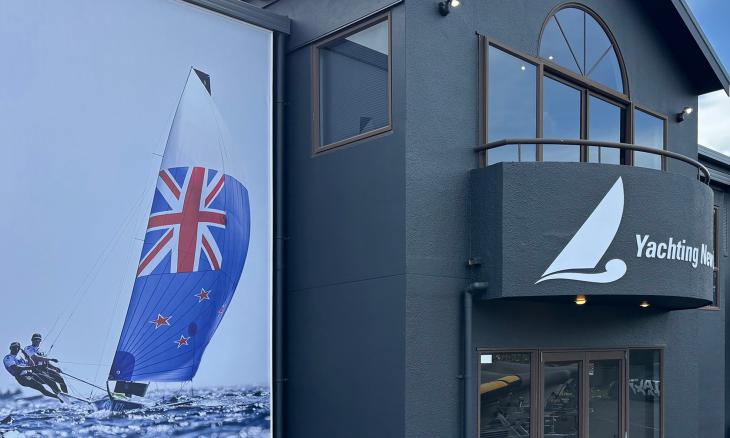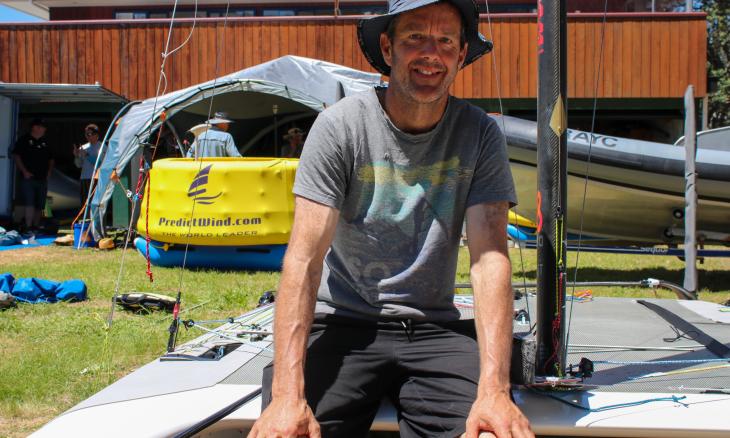Born from boat park conversations and a lofty ambition to make sailing more inclusive, a dedicated group of volunteers' passion project has at last caught the wind. Thirteen years after the idea first took shape, the ParAble yacht has been formally recognised as a national sailing class - a landmark moment for the Sailability Wellington Trust and for inclusive sailing in New Zealand.
It was a special moment for Don Manning, the chief executive of the Sailability Wellington Trust, when he received the call informing him that Yachting New Zealand had formally added the ParAble boat to its fleet of class associations.
"It's been a long time coming," he said. "What started out as a passion project has taken on a life of its own. But when you finally see the boats in the water and people enjoying their time sailing them - that’s when you know it's all been worth it."
The trust is a volunteer-led organisation dedicated to making sailing accessible for people with disabilities. It operates from three bases - Evans Bay Yacht and Motor Boat Club, Seaview Marina and Titahi Bay Boating Club - and has more than 200 sailors taking part in regular sessions. "If the weather's good, we're out six days a week," Manning said. "Our numbers have been growing steadily, and that's been fantastic to see."
Manning is quick to clarify the organisation's ethos. "While mostly it's referred to as 'sailing for the disabled', we prefer 'inclusive sailing'," he said. "It's about getting everyone out on the water - sailors and the 70–strong support crew."
That philosophy has been the driving force behind bringing the ParAble class to life. For years, the mainstay of Sailability Wellington's fleet has been the Hansa 303 – a reliable two-person boat, but one with limits.
"The Hansa 303 is registered for a payload of only 160kg," Manning explained. "That's fine for some of our sailors, but for others - particularly when you have a sailor and a crew - it’s just not enough. We needed something bigger, something more challenging to race, and something that could be launched straight off a beach trolley."
That need sparked the idea for a new class of boat, and the beginning of a 13-year voyage. "Back in 2012, we went to Hansa and asked if they'd be interested in developing a larger boat like ParAble," Manning recalled. "They weren't keen. I got the impression they thought it would be too hard. And, to be fair, they were almost right," he said with a laugh.
The project stalled for a while, but the idea never disappeared. "A group of us got together again and decided we'd have a crack at it ourselves," Manning said. They approached the late, renowned designer Bruce Askew for advice. "Bruce didn't pull any punches - he told us it wouldn't be easy, but not impossible either. He spent a lot of time testing our existing boats and eventually came back and said, 'This is what you need.'"
Askew's guidance laid the foundation for the design that would become the ParAble. Local boat designer and computer whizz Kevin Cudby then joined the project, developing what Manning describes as an "innovative" hull shape that was first tank-tested on computer and later trialled on the water.

Don Manning (second from right) is the CEO of the Sailability Wellington Trust - the driving force behind the new ParAble class.
A group of the Sailability Wellington volunteers started building the prototype from western red cedar in 2013. It took three years before they had the first fibreglass hull mould ready.
"Everything was done in our spare time while we continued to sail the Hansa 303s. We were also dependent on the generosity of the team at Carboglass Mouldings in Lower Hutt, who built the hull mould and first hull," Manning said.
"The team at Tory Channel Construction also donated an immense amount of time, skill and materials to complete the build of two prototypes, and plans were drawn up for half a dozen more."
But progress was slow.
"We had to build a new floating pontoon and storage shed at Titahi Bay," Manning said. "We also had to pause to organise the 2020 Hansa national regatta and then, of course, Covid hit. Each time, the ParAble project had to take a back seat."
In the meantime, Sailability Wellington bought 10 new Hansa 303s to meet growing demand, but the vision for a new class never faded. Eventually, Manning's team connected with Auckland boatbuilders Mackay Boats, a company renowned for its craftsmanship and Olympic-level dinghies.
"Mackay has been excellent to work with," Manning said. "We decided to use a bulb centreboard from one of their kits, and they also produced the rudders and designed the mast for us. They've done a brilliant job." The sails, meanwhile, were produced by Doyle Sails in Auckland. "They landed on a one-design sail that works really well, and we have almost finished refining the details."
The first production models were finally delivered to Sailability Wellington's Seaview shed a month ago.
"The early prototypes were heavy - over 140kg per hull - but with the experience and knowledge of the Mackay Boats team, we've now got that down to about 100 kilograms per boat," Manning said. "That's made a big difference."
Each iteration brought the team closer to what he describes as "the perfect mix of accessibility and performance" - and the ParAble’s innovations are subtle but significant. The 4.1m boat features a self-draining cockpit, takes a payload of 240kg, and can be launched directly from the beach using a simple trolley.
"No cranes, no fuss," Manning said. "It's safer, quicker, and means more people can go sailing without having to wait for specialist equipment."
The design also allows for flexible seating and sail configurations - from learn-to-sail setups to high-performance racing. "We wanted something that could do it all," Manning said. "A boat that beginners could learn on, but that also offers a proper racing experience for sailors who are progressing."

The 4.1m boat has adjustable seating, a self-draining cockpit, takes a payload of 240kg, and can be launched directly from the beach using a simple trolley.
The project's longevity has only been possible thanks to a large and dedicated volunteer base. Manning estimates around 15 volunteers have been directly involved in the ParAble project over the years. "That’s probably the part I'm most proud of," he said. "The number of people who've given their time, skills and money to make this happen has been incredible. Altogether we've raised over $600,000 - most of that from people who just wanted to help - we still need some more to finish the project off."
Among those who helped test and refine the boats was New Zealand para sailor Chris Sharp, who represented the country at the 2016 Rio Paralympics - the last time sailing featured in the Games. "Chris sailed the boats for a bit and mucked around with the sail designs," Manning said. "He gave us great feedback. Having someone of his calibre involved really helped us fine-tune the setup."
Now that the ParAble class has official recognition from Yachting New Zealand, the possibilities are expanding rapidly.
"The class affiliation means we can now host proper national championships," Manning said. "We're planning the first one for March or April next year at Seaview, and a second series specifically for sailors with intellectual impairments."
Further regattas are also being developed for vision-impaired sailors and those, Manning jokes, with "TMB - too many birthdays".

The ParAble has been formally recognised as a class association by Yachting New Zealand. Photo / Simon Hoyle, Southlight Studios
Beyond New Zealand, the ParAble has already begun attracting international attention. Manning has fielded enquiries from organisations in Australia, the United Kingdom, the United States and Greece. "I'm not surprised," he said. "Everyone who's sailed the boat can't stop talking about how amazing it feels. Once we've got all the boats and sails ready for the nationals, I expect interest to really peak.
"The project may have taken over a decade to reach this point, but its potential to change the face of inclusive sailing - in New Zealand and beyond - is only just beginning."
Plans are already under way for an official launch celebration and regatta.
"That would be a fitting way to mark what's been such a long and rewarding journey," Manning said. "The dream is to see this boat all over the world, with as many sailors as possible enjoying the sport. It's about inclusivity - that’s what the name stands for. We wanted to remove a few more barriers so more people can experience the freedom of sailing. If we've achieved that, then I can die happy."
Anyone wanting to support the ParAble project is encouraged to contact Manning at ceo@sailabilitywgtn.nz.




